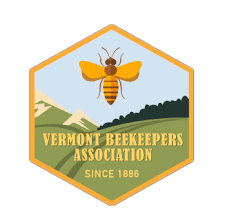 Vermont Beekeepers Refute State Claims of Honey Bee Health
Vermont Beekeepers Refute State Claims of Honey Bee Health
With decades of effort toward raising public awareness on the plight of pollinators, we the beekeepers of Vermont are deeply concerned about recent communications from the Vermont Agency of Agriculture Food and Markets (VAAFM), and we would like to set the record straight.
The VAAFM’s claim of record honey bee numbers in Vermont as evidence of a “healthy and robust beekeeping industry” is not only misleading but serves to undermine our industry and ongoing efforts in Vermont to protect managed and native bees, both of whom are in great peril. Contrary to VAAFM’s recent communications, the beekeeping and scientific community agree that the total number of honey bee colonies cannot be used to measure bee health (a honey bee colony is a single family of bees housed in a hive.)
A more accurate estimate of our state honey bee health is annual colony loss. According to VAAFM’s own statistics, Vermont beekeepers have lost at least 25% of their bees during the winter months for the last three years. The Bee Informed Partnership, a national organization that tracks U.S. honey bee colony losses, reports combined summer and winter colony losses for Vermonters much higher at 35-85% each year for the last four years. Vermont beekeepers have maintained colony numbers by becoming bee-replacers instead of beekeepers. When VAAFM takes their tally of Vermont hives each July, beekeepers have already created new colonies to replace their losses. However, this is a very costly and laborious process – one that is not indicative of a “healthy and robust” beekeeping industry.
Not only is colony count the wrong measure of our industry’s health, the numbers themselves are misleading. Non-beekeepers are largely unaware that thousands of Vermont honey bee colonies counted by VAAFM are propagated in the south, trucked to Vermont in early summer, and then moved south again before winter. These imported colonies more than double the Vermont colony count for a short period of time each year.
The apparent increase in colony numbers from 2016-2023 was largely driven by beekeepers registering their pre-existing colonies thanks to the collaborative efforts of the Vermont Beekeepers Association and the VAAFM. The increase in colony numbers during the period presented by the VAAFM represents both a growth in program participation and an increasingly accurate state database.
Across our entire beekeeping industry, annual colony losses are too high and unsustainable. All Vermont beekeepers, including migratory beekeepers, struggle with a high degree of annual colony losses due to pests, pathogens, environmental impacts, and pesticide use. As we continue to confront these challenges, it is disheartening to find that our state agricultural agency has used inaccurate numbers and oversimplification of a complex situation to suggest that bees are flourishing in our state. These inaccuracies undermine the enormous efforts of Vermont beekeepers and the urgency of addressing the very real threats to pollinator health here in Vermont.
Signed,
The Vermont Beekeepers Association Board of Directors
Since 1886 the VBA has promoted the general welfare of Vermont’s Apiculture Industry while sustaining a friendly body of unity among the state’s beekeepers.








